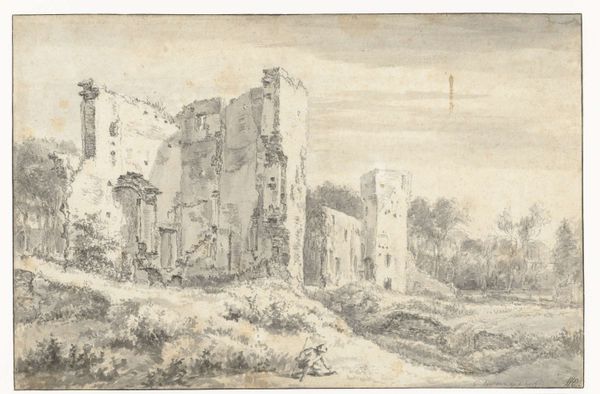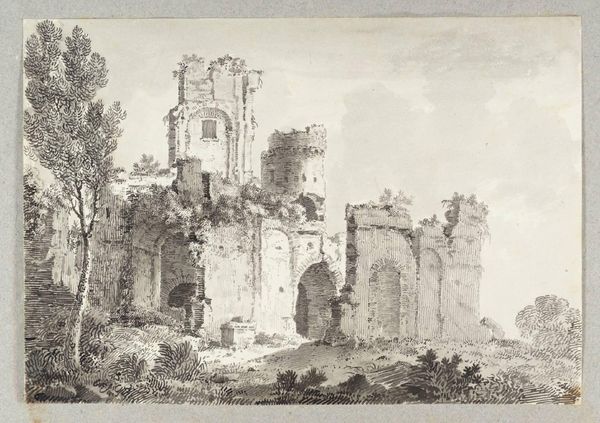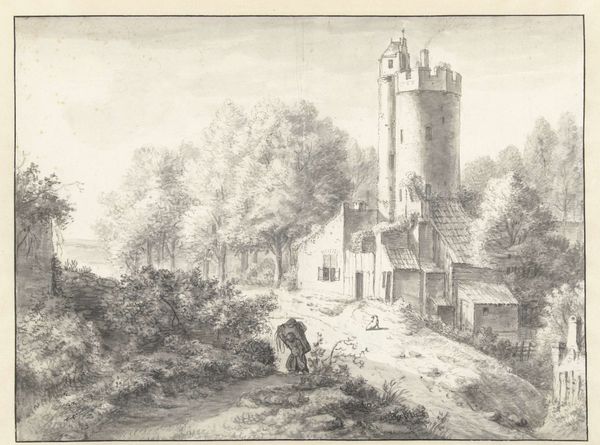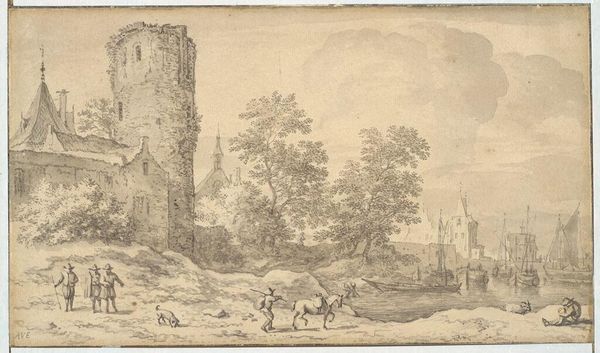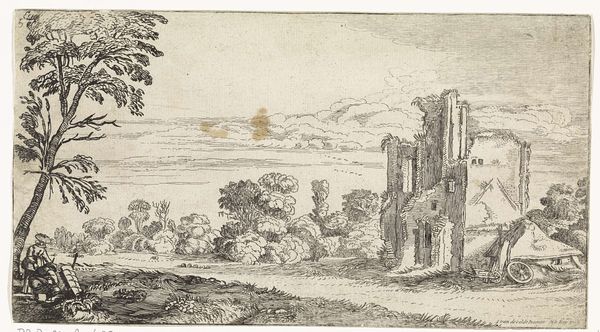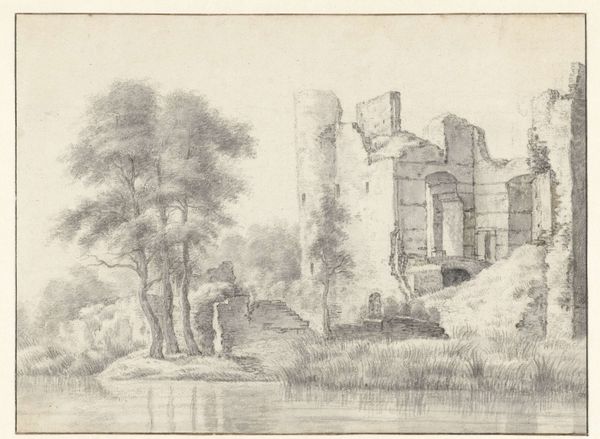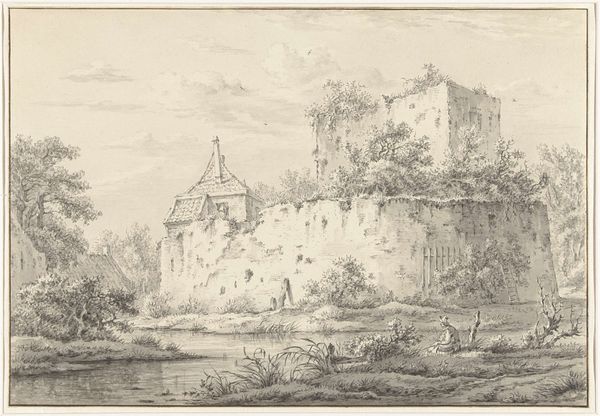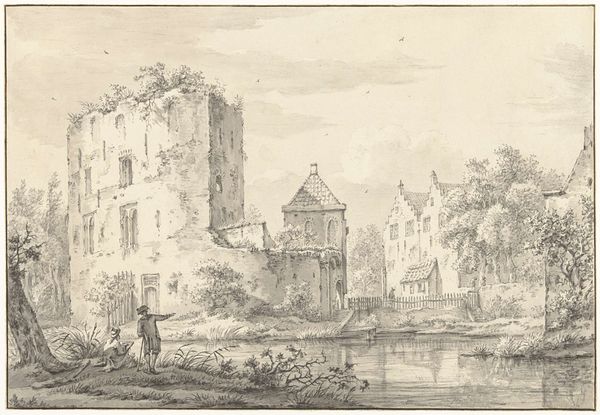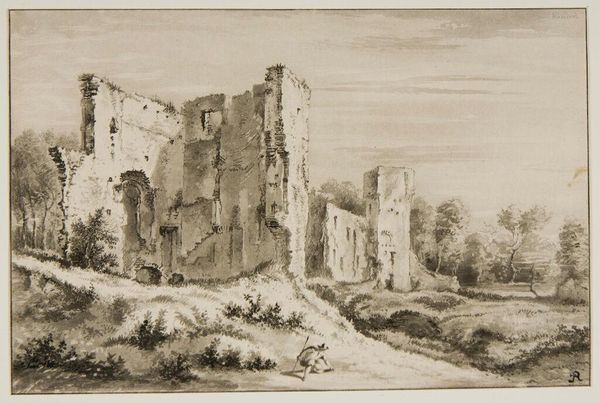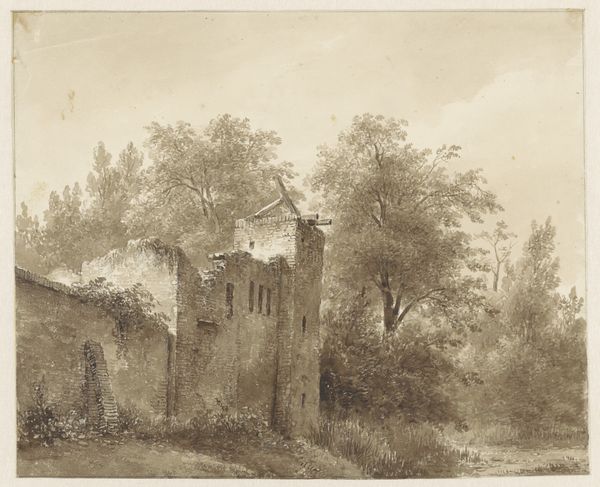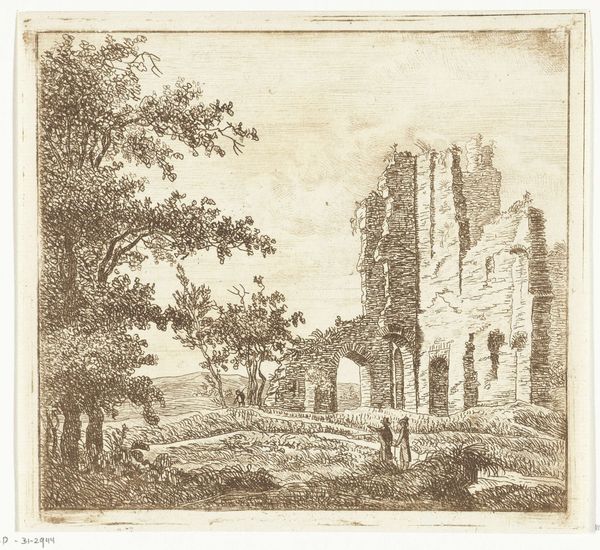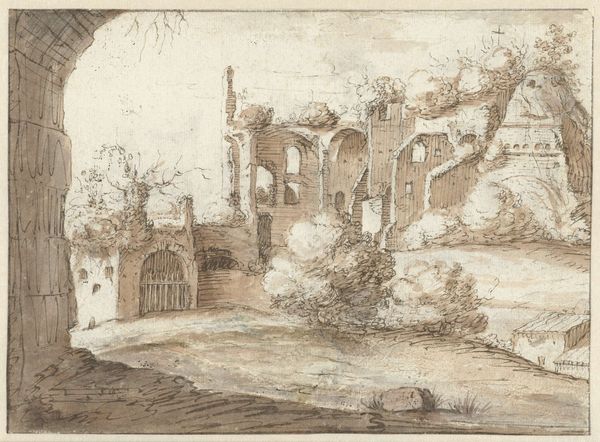
drawing, etching, paper, ink
#
drawing
#
dutch-golden-age
#
etching
#
landscape
#
etching
#
paper
#
ink
Dimensions: height 199 mm, width 305 mm
Copyright: Rijks Museum: Open Domain
Editor: We’re looking at Jacob van Ruisdael's "View of the Ruins of Egmond Castle," circa 1655. It's an etching in ink on paper, and honestly, it gives me a somber feeling. What do you see in this piece? Curator: It's a poignant portrayal of decay, isn't it? Ruisdael wasn't merely depicting a crumbling structure; he was engaging with the weight of Dutch history and perhaps commenting on fleeting power. Castles, especially ruined ones, represent the aristocracy. What happens when their authority fades? Editor: So, the ruins are more than just an old building? They represent a shift in power dynamics? Curator: Exactly. Consider the historical context. The Dutch Golden Age was rising, challenging established orders. The decline of the aristocracy mirrored shifts in the economic landscape, which is subtly represented through the wild untamed growth around the buildings, slowly reclaiming spaces. Editor: That's fascinating, I never would have thought of the wilderness around the castle that way. Curator: Note the figures in the foreground, dwarfed by the immensity of the ruin, suggesting a sense of transience and our relationship to time and change. How do their inclusion affect your experience of the piece? Editor: They feel like bystanders, observing history, almost powerless in the face of time and nature. I am interested, are there similar artistic movements happening elsewhere at this time? Curator: Absolutely. This period across Europe experienced similar depictions of ruins symbolizing societal and political transitions, however the nuances differ from country to country, depending on the circumstances and social issues, therefore giving rise to the emergence of landscape paintings as a symbol. What do you take away from all of this? Editor: I'm definitely seeing ruins in a new light. Not just as remnants of the past, but as symbols of broader social and political change, and considering how society as a whole interacts and reconciles the decay with contemporary identity. Curator: Indeed. Art often holds a mirror to society.
Comments
No comments
Be the first to comment and join the conversation on the ultimate creative platform.
